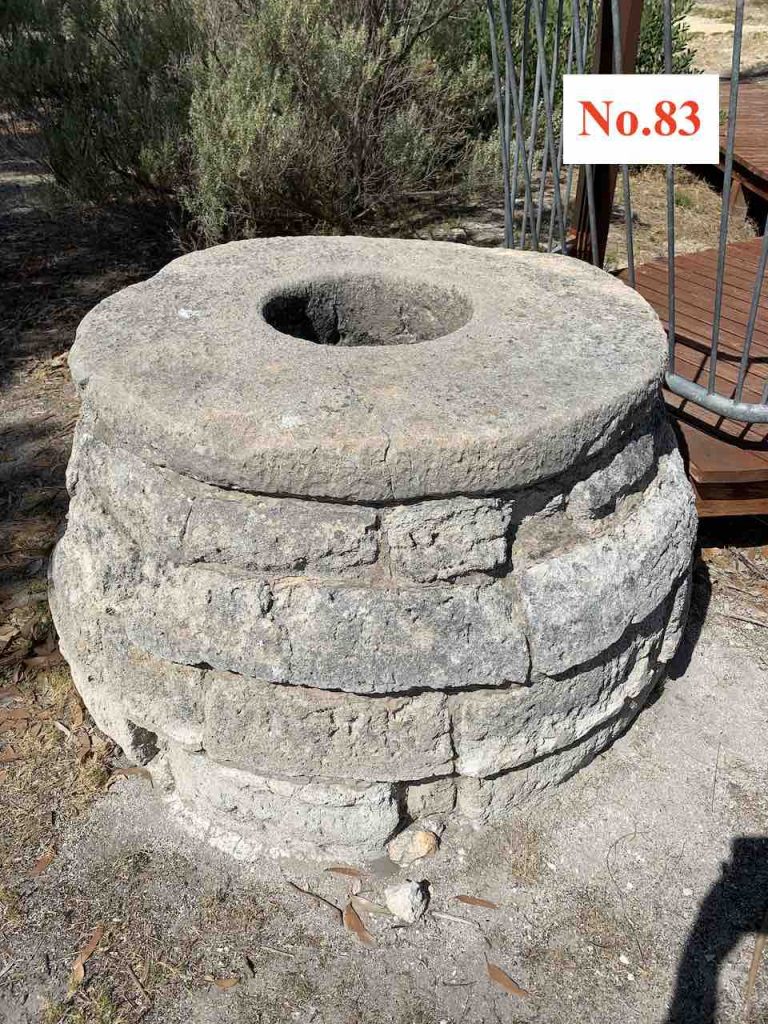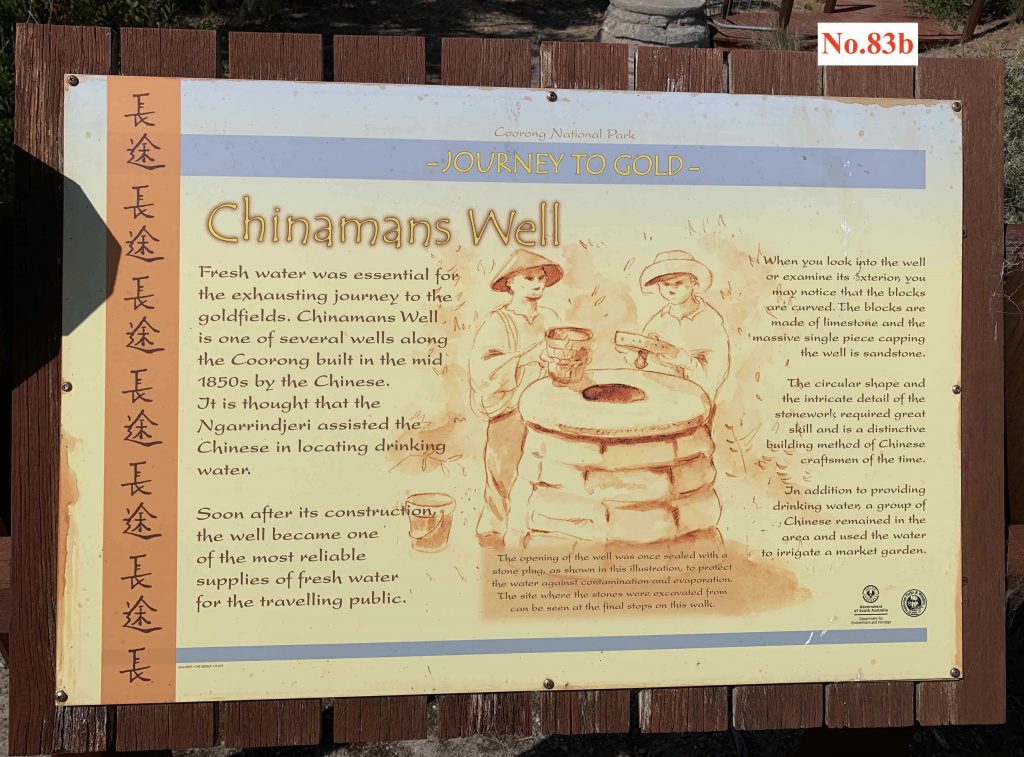
Apart from the Dictation Test itself [see No1 & No.40] all the objects featured here are real. Chinamans Well on the Coorong in South Australia however is an interesting exception worthy of mention here. This is due to the fact that South Australian tourism has seen fit to erect a series of sign boards describing an elaborate well building project by Chinese goldseekers seemingly based on a picnic attended by three Chinese curators of the Adelaide Entombed Warriors exhibition of the 1980s.
Of course, such elaborate folklore began much earlier and is a good example of the “name inspires a story which justifies the name” circularity of myth making generally. This is a circularity all too common but one that reaches endemic proportions it would seem in localities along the Robe Chinese goldseekers walk. Thus, a well on the Coorong early acquired the name Chinamans Well or even Chinamans Wells.[1] This was one of numerous wells on the route many people, including Chinese goldseekers, walked in 1856 between Adelaide and the Victorian goldfields or Melbourne. The mentions of the name provided no indication of what kind of well it was.
In fact, a number of wells of various types have acquired the designation ‘Chinamans’. And local stories often assume without evidence they were dug by – as well as used by – the goldseeking walkers. The main difference with the Chinamans Well of the Coorong is that it is a well-made rounded stone built capped well engineered out of the local stone unlike any other well in South Australia apparently. Its exact date or who built it being a mystery there are any number of suppositions and stories waiting to explain it.

Having been named Chinamans Well it was an easy jump to assume it was actually built by Chinese people. Though why would anyone passing through on their way to the goldfields stop at this one point in a 400 kms walk to build such an elaborate well? And at a spot not the most lacking in wells or sources of water? A more significant question: Is there anything ‘Chinese’ about this type of well? It is here the picnicking Chinese curators were asked their opinion by local archaeologists and the gist appears to have been it was of ‘Southern China’.[2] As the Entombed Warrior curators were no doubt ‘Northern Chinese’ this was a bit like a Londoner being asked their opinion of the design of a medieval Scottish hill fort. Nevertheless, this was good enough for the local archaeologists and this in turn was good enough for the people of South Australian tourism who not only began declaring the well was Chinese made but designed a series of elaborate signages that threw in every cliche and stereotype about Chinese goldseekers they could think of.
Not only is the well not of any known Chinese design – I am familiar with the wells of the villages in the areas where people left to go to Australia and images sent to heritage architects and others of this ‘Southern China’ area (the Pearl River Delta) cannot see any relation to wells they are familiar with. Other considerations are that the dates are wrong with the well reported in 1852 – ‘limestone wells’ – before the earliest possible date of Chinese involvement – 1856.[3] Certainly, Paton did not think this was a Chinese well and the account quoted that it predates the arrival of Chinese goldseekers would appear to be the most plausible.[4]
Chinamans Well is in fact only most extreme example of an amazing number of attributions to the Chinese goldseekers of buildings (woolsheds) and other constructions (wells, Chinese wall) all along the route. Investigation would indicate that all are improbable, either the wrong date, no evidence of Chinese design, or unable to explain why people would spend their time building such things when they had goldfields to get to. Though rather fanciful explanations do abound.[5]
Mysteries demand an explanation and the exact nature of this interesting well on the Coorong certainly remains mysterious. With the folk memory of the Chinese goldseekers prominent they seem to serve as a ready explanation for anything interesting or different in the local area. Ignorance of the Chinese goldseekers, their motivations or skills, allowing even the most implausible story to take on a credibility far in excess of the plausible.
[1] Adelaide Observer, 25 October 1856, p.7.
[2] Roger Luebbers, The archaeology of Chinamans Wells and Hacks Station, the Coorong, South Australia, 1996, p.18.
[3] Ragless, Oliver & Ragless, Margaret E, Oliver’s diary: an ‘andkichef of eirth [sic]. Investigator Press, Hawthorndene, S. Australia, 1986, p.18.
[4] Penny Paton, ‘Chinamans Well’ in Paton, D. C. At the end of the river: the Coorong and lower lakes, ATF Press, Hindmarsh, SA, 2010, pp.40-41.
[5] That they were held prisoner for fear of being dobbed into the Victorian Police is the most fanciful.

